
New Managing Director for Bellona Norway
The Board of the Bellona Foundation has appointed former Minister of Climate and the Environment Sveinung Rotevatn as Managing Director of Bellona No...
News

Publish date: April 19, 2015
News
NEW ORLEANS –Five years after the Deepwater Horizon oil rig exploded, killed 11 workers, and unleashed the largest accidental oil spill in history, the lingering question five years on is how long will it take the environment to get back to “normal.”
What’s normal for the Gulf, however, is an elusive question for scientists. One of the most deviling issues is where vast amounts of the 4.9 million barrels of oil still unaccounted for and 1.85 million gallons of the toxic oil dispersant Corexit that sunk it went, and to what extent this combination is still affecting the seas, marshes, beaches and wildlife.
The oil still at large, said a 2014 study from the University of California at Santa Barbara, the Woods Hole Oceanographic Institute and the University of California at Irvine, is estimated at about 2 million barrels, which is on the ocean floor at depths of some 1000 meters.
Scientists generally estimate it will take another five to 10 years from now to determine the full impact of the spill from BP’s Macondo well, and most agree that its ongoing effects could last for generations.
One sticking point is that there’s scant research on what the entire Gulf-wide system looked like in its pre-disaster state, which makes rehabilitating everything from microbial communities to ecosystems and organisms further up the food chain a matter of puzzling together enormous bodies of often baffling information. And there’s no quick way to do that.
“There’s this enormous multitude of interacting system level effects” in the Gulf, said the University of Georgia’s Dr Samatha Joye, whose research team has been studying how oil deposited across the 2000 square kilometers of the Gulf seafloor has influenced deep dwelling microbial organism communities.
“These are questions we are not going to be able to answer in a year, or two years, or three, so it may take a decade before we start to get a clue about it, and probably two decades before we begin to truly understand,” she said in a telephone interview.
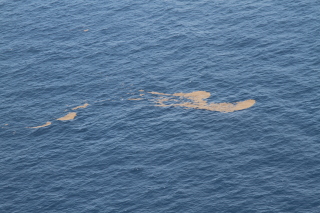
Issues besides Deepwater Horizon oil
Another snag is that the Gulf was hardly pristine territory before the spill. Oil and gas canals have eroded wetlands for decades, and climate change is speeding that up. The Mississippi River dumps sewage and agricultural waste into the Gulf from thousands of kilometers upstream. Coastal refineries have spills of their own.
More than six decades of offshore drilling have also put oil, grease and heavy metals into the Gulf environment. And in the last century, the US military even dumped bombs and chemical weapons into its waters.
Mapping a full restoration plan has to account for conditions beyond just the Deepwater Horizon oil.
“Searching only for polycyclic aromatic hydrocarbons (PAHs) in the system […] misses other persistent problems of oil pollution,” Dr Felicia Coleman, director of Florida State University’s Coastal and Marine Laboratory, wrote in an email interview. “There is no question that the long-term [environmental] effects on the deep sea present a serious concern regarding the Deepwater Horizon.”
“Oil and dispersants are both additive and synergistic in terms of their effect on ecosystem heath in concert with agricultural and industrial pollutants,” she wrote.
For instance, there is a considerable amount of mercury already existing in Gulf waters. One effect oil has on mercury pollution, for instance, is the bio-accumulation of mercury in animals when it becomes methylated. This occurs during oxygen depletion, or hypoxia, when microbes eat oil and die en masse.
Other studies from Woods Holes that Dr Coleman pointed out indicate that the oxidation of oil pollutants can be more toxic and longer lasting than the oil itself.
“Many of the problems that predate the oil spill have not raised the same ire,” as the Deepwater Horizon spill, she wrote. “The reality is that few people really understand their linkage to the deep sea. The lack of concern here I think is largely due to a lack of knowledge. I hope that one thing that comes out of all this is some growth in understanding about the linkages.”
Wildlife at risk
The National Wildlife Federation (NWF) released a report in 2014, raising the alarm over 14 animal species imperiled by the spill. Its new report, released on March 30, raised the number of species in trouble to 20.
BP US’s senior vice president of communications, Geoff Morrell, blasted the new report in a statement, calling it “a work of political advocacy by an organization that has referred to the Deepwater Horizon accident as ‘an historic opportunity’ to finance its policy agenda.”
Morrell has led BP’s recent effort to communicate that the Gulf has “inherent resilience” to oil spills.
Karl Kristensen, Bellona’s adviser on petroleum pollution, doesn’t argue that the Gulf lacks “inherent resilience,” but rather that its resilience has been tested beyond limits and profoundly weakened by the Deepwater Horizon spill. As the drive to develop more deep-water oil wells similar to the 1520-meter-deep Macondo discovery increases in the region, so do the risks of another enormous blowout that, with all of the other environmental stressors on the Gulf, could damage the ecosystem irreversibly.

New regulations on blowout preventers to be proposed by the Obama administration on the spill’s April 20 anniversary, according to The New York Times, haven’t mitigated environmental fears of another big deep-water gusher.
The failure of the Macondo well’s blowout preventer was a major contributor to the accident that coated the Gulf in black sludge. But the new regulation appears to do nothing but sugar a bitter pill: The new regulations accompany opening more Atlantic, Gulf of Mexico, and thw Arctic oil exploration, according to the paper.
Dolphin deaths on the increase
In assessing Gulf wildlife, the NWF and scientific groups have spotlighted dolphins, whose deaths in the years following the spill have been well above average for any point over the past two decades.
In 2014, dolphins were found dead at more than twice past rates from the Florida Panhandle to Louisiana, with dolphins in areas heavily effected by oil dying at four times normal rates, according to a study by the National Atmospheric and Oceanic Administration (NOAA).
Another NOAA study published in Environmental Science & Technology Magazine in 2013, showed dolphins in Louisiana’s oiled Barataria Bay presented physical symptoms consistent with oil exposure, like bizarre lung masses, adrenal difficulties, tooth loss and other ailments documented among oil spill clean up workers. Dolphins are also experiencing reproductive difficulties.
NOAA has also determined that the high dolphin mortality hasn’t resulted from other typical causes of mass dolphin deaths. A number of the deaths predated the spill, so the agency’s investigation into the oil and dispersant’s role in the mortality is ongoing.
Whales, metals and scare food
Other marine mammals at risk are sperm whales. Bruce Mate of the Hatfield Marine Science Center at Oregon State University told the February Gulf of Mexico Oil Spill & Ecosystem Science Conference in Houston that the whales are no longer feeding in areas of the Gulf that were hit by the spill.
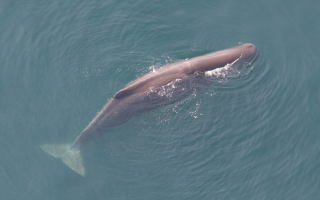
These hard-hit areas host squid, one of the whales’ main food sources. The squid, in turn, feed on bottom dwelling organisms, and Mate’s study suggests these organisms have dried up because of the oil and dispersant.
Mate and coauthors based their conclusions on a study of 54 sperm whales they tracked by tagging between 2010 and 2013. He said that prior to the blowout, whales frequently dove for squid in the zone that was later most heavily hit by oil. The whales now seldom dive in that area, suggesting the organisms squid feed on have dried up.
Sperm whales and Bryde’s whales alike are at peril from metals found in Macondo oil, according to a March 2014 study in Environmental Science & Technology. By collecting skin biopsies of whales, researchers determined their blubber contained high concentrations of chromium and nickel, two constituents of oil known to cause cancer and DNA damage in marine mammals.
“Given the capacity of these metals to damage DNA, their presence in the oil, and their elevated concentrations in whales, we suggest that metal exposure is an important understudied concern for the Deepwater Horizon oil disaster,” the report’s authors wrote.
Soil and aerosolized pollution affecting bugs
Even insects haven’t been spared. According to Louisiana State University entomologist Dr Linda Hooper-Bui, a robust presence of insects supplies food for seabirds and contributes to nutrient cycling in wetlands soil.
A study Dr Hooper-Bui presented in 2014 showed that insect populations along many parts of Louisiana’s wetlands coast that were heavily oiled are in decline to a degree that raises eyebrows.
It’s still unclear exactly how the remaining oil is killing the insects, but the connection to her is apparent: Hurricanes can push oil into areas that were not hit in the initial spill, killing more insects.
These storms can also re-mobilize oil in marsh areas that were inundated by the spill.
“After Hurricane Isaac in 2012, it looked like someone poured motor oil on the marsh,” she said in a telephone interview describing an area she and her students were studying.
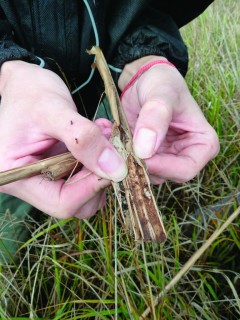
The heat is also hard on insects in the post-spill era, she said. Temperatures above 30 degrees Celsius– which aren’t uncommon in Louisiana – cause hydrocarbons buried in beach and marsh soils to go airborne, further driving insect populations away. Dr Hooper-Bui did say she’s observed a slight bounce-back in ant communities since 2010, which will improve circumstances for many seabirds, but her research is ongoing.
Will quantifying the spilled oil ever be possible?
“In terms of where the oil is, what’s left of it is on the seafloor, the beaches and the marshes – it’s stranded in one of those three reservoirs,” said Dr Joye. “I honestly think it’s almost impossible to absolutely say without a doubt how much [oil] is in each of those compartments.”
Each of these environments can have very different effects on how oil breaks down. Hydrocarbons in marshes are more exposed to photochemical weathering than oil on the sea bottom, which can become entrained in the anaerobic conditions of the seabed.
Oil found on beaches likewise breaks down according to different cricumstances. That which is buried at shallower depths can be exposed to light and oxygen aiding in its breakdown, where what is buried deeper might not have been exposed to these deteriorating effects.
On the seafloor, studies have suggested the oil residue exists in thin layers in some areas of the seafloor and thick pockets in others.
Inventorying oil on the ocean floor
Some recent research is offering clues about volumes of oil in sediment at the bottom of the sea. A study from the University of California at Santa Barbara, would account for 2 to 16 percent of the oil spilled. Another from the Florida State University puts its finger on 3 to 5 percent.
The study from Florida, published in December by Dr Jeff Chanton showed that some 6 million to 10 million gallons of Deepwater Horizon oil settled at the bottom of the Gulf 100 kilometers southeast of the Mississippi Delta
Dr Chanton’s technique used carbon 14, a radioactive isotope as a so-called inverse tracer to determine where oil might have settled on the sea floor. Unlike other sediment on the bottom of the sea, oil doesn’t contain carbon 14, so oil would immediately stand out.
After examining the samples, the Dr Chanton and his team made a map of the areas affected by the spill, and determined about 8,400 square kilometers are covered with oil from the Macondo well. That the oil sunk means the water above it is clear, said Chanton, but that could create another persistent problem. “There’s less oxygen down there, and so that will slow the decomposition rate of the oil,” Chanton told Live Science. “It might be there for a long period of time, a little reservoir of contamination.”
This could expose certain non-migratory fish in the area to tumors and lesions, a study by the University of California at Davis, suggested.
Crude bathtub ring
The separate Santa Barbara study led by Dr David Valentine, published by the Proceedings of the National Academy of Sciences in September, indicated a fallout plume had deposited about 10 percent of the blowout’s oil on 3,200 square kilometers, or about the area of the US state of Rhode Island, on the ocean floor. By analyzing data from more than 3,000 samples collected at 534 locations over 12 expeditions, Valentine and his co-researchers determined the oil they discovered was patchily distributed some 40 kilometers from the wellhead.
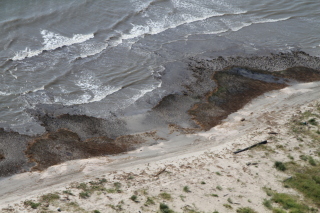
“There’s this sort of ring where you see around the Macondo well where the concentrations are elevated,” Valentine said. The study calls it a “bathtub ring.”
Valentine wrote that oil was initially suspended in deep-water plumes – something consistent with the heavy use of Corexit. It later settled on the seafloor. He further suggested there could be bigger “splotches” of oil in the Gulf that haven’t been discovered.
Dr Chanton told Live Science the numbers in his Florida State University study were “a little more conservative” than the Santa Barbara study. But “if the two approaches agree with a factor or two, that’s pretty good for estimating all of the oil on the seafloor.”
Don Rice, program director in the National Science Foundation’s Division of Ocean Sciences, said: “This analysis provides us with, for the first time, some closure on the question ‘Where did the oil go and how?’”
But it’s hardly cause for celebration. “It also alerts us that this knowledge remains largely provisional until we can fully account for the remaining” oil, Rice said.
Tar mats also hold clues
Other oil has been taken up in tar mats, which form when oil accumulates in depressions where the sand and waves shred them into pieces that hit the shore as tar balls.
On March 18, New Orleans newspapers reported the US Coast Guard had struggled for a month to remove an 11,000-kilogram tar mat off the state’s East Grand Terre Island.
Jonathan Henderson of The Gulf Restoration Network in New Orleans has spent countless hours since 2010 finding and cataloging tar balls as they wash up on Louisiana’s coast. Some of his recent finds date back only days.
“Whenever it rains, you can find dozens if not hundreds of tar balls on the beaches in Grand Isle, Elmer Island, around Barataria Bay [in southern Louisiana], Bay Jimmy,” he said.
The delicate work of fingerprinting
Valentine’s work on the bathtub ring was flamed by BP for its failure to include chemical signature tests of the oil he documented. Such tests, he said, were impossible because of the oil’s degradation.
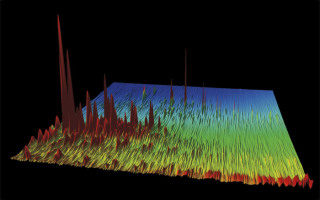
But even without a fingerprint, he says, all other evidence, including the depth of the oil, the way it laid out, and its distance from the well, directly point to Macondo.
It is critical for the US Environmental Protection Agency, NOAA and other federal agencies to have accurate fingerprints to make their case in proving that Macondo signature oil is still in the Gulf, and their criteria is stringent. At the same time, getting accurate fingerprints is often one of the biggest challenges facing scientists studying the spill.
It requires extremely sophisticated technology that can examine how oil specimens have changed over time and quantify concentrations that lead it back to the Macondo well.
“I can tell you like everybody else that fingerprinting is the beast of this oil spill,” Dr Joye said. “How can you prove without a shadow of a doubt that it’s Macondo oil?” she said, adding, “It’s very difficult based on the oil fingerprinting criteria because once you start weathering the oil, the fingerprint falls apart – and once you disperse the oil the fingerprint falls apart and it becomes untraceable.”
But the sheer impact of the spill has galvanized the scientific community, and provided an avalanche of money – much of it from BP grant funding and fines – that is driving unprecedented research in the Gulf.
“A lot of people died [in the Deepwater Horizon explosion] and that is tragic,” Dr Joye said. “ But I think the tragedy motivates all of us to learn as much as we can” about what she called “this very complex, very difficult and very frustrating topic.”
This is the third in a series of articles Bellona is producing for the fifth anniversary of the Deepwater Horizon spill.

The Board of the Bellona Foundation has appointed former Minister of Climate and the Environment Sveinung Rotevatn as Managing Director of Bellona No...

Økokrim, Norway’s authority for investigating and prosecuting economic and environmental crime, has imposed a record fine on Equinor following a comp...

Our op-ed originally appeared in The Moscow Times. For more than three decades, Russia has been burdened with the remains of the Soviet ...

The United Nation’s COP30 global climate negotiations in Belém, Brazil ended this weekend with a watered-down resolution that failed to halt deforest...